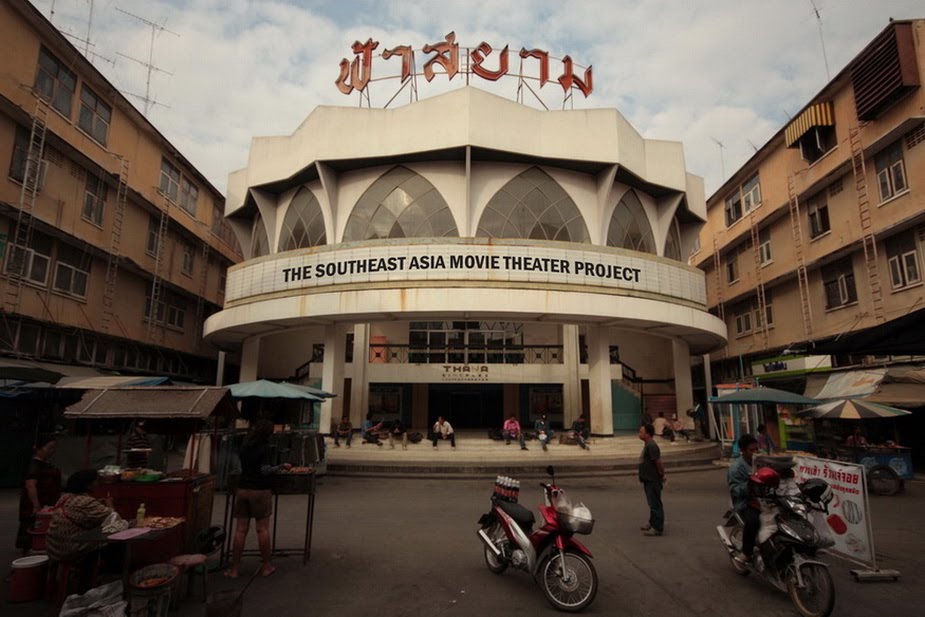As the month of August winds down, so does my latest exhibition of movie theater photography. "Forgotten in Plain Sight: Photographs of Southeast Asia's Disappearing Movie Theaters," spent most of the month covering the walls of The Philadelphia Mausoleum of Contemporary Art. PhilaMOCA for short. The set consists of 20 images, featuring a variety of theater views from Thailand and Myanmar, a good portion of which have never before been exhibited.
This also marked the first major exhibition of my work in the United States, and possibly the best one to date in terms of content and presentation.
For those interested in owning a piece of this exhibition, individual images are on sale for $90 each (plus shipping), unframed. Each image is part of a signed and numbered limited run of 100, printed at an 18X24 size on high-quality archival photo paper with a matte finish. As usual, each sale will go towards supporting the Southeast Asia Movie theater Project, enabling me to continue documenting the region's disappearing stand-alone movie theaters.
To get your photograph just click the PayPal "Buy Now" button below. Unfortunately, only 10 of the 20 images are indicated in the PayPal button, but if you are interested in one that's not listed, or you want one printed in a different size, please email me directly at sea.theater@hotmail.com
Happy viewing.
Tea at the Aung Theit Hti
Myaungmya, Irrawaddy Region, Myanmar
Final Stage
The Sri Burapha Thaeater
Chanthanburi, Thailand
Mingala Thiri Light Beam
The Mingala Thiri Cinema
Dawei, Thanintharyi Region, Myanmar
The Bang Khae Rama
Bangkok, Thailand
The Fa Siam Theater
Suphanburi, Thailand
The Pak Nam Rama
Pak Nam, Samut Prakarn, Thailand
The Sein Aung Win Cinema
Kyaukme, Shan State, Myanmar
The Serm Suk Theater
Kumpawaphi, Udon Thani Province, Thailand
The Siri Phanom Rama
Phanom Sarakam, Chachoengsao Province, Thailand
The Win Cinema
Toungoo, Bago Region, Myanmar
The Thwin at night
Yangon, Myanmar
The Trang Rama
Trang, Thailand
The Peth Rama
Loei, Thailand
Front row kids
The Aung Thiri Cinema
Lashio, Shan State, Myanmar
Balcony View
The Tun Thiri Cinema
Pyay, Bago Region, Myanmar
Thamada Auditorium View
The Thamada Cinema
Yangon, Myanmar
Oscar's Prostitutes
The Oscar Theater
Bangkok, Thailand
Siam Diamond in Post Life
The Siam Diamond Theater
Sri Samrong, Sukhothai Province, Thailand
Rama Ticket Taker
The Nonkorn Non Rama
Nonthaburi, Thailand






















